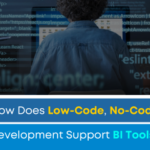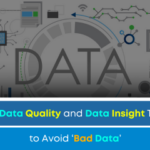Before Adopting BI Tools, Make a Plan
Without business intelligence, the enterprise does not have an objective understanding of what works, what does not work, and how, when and where to make changes to adapt to the market, its customers and its competition.
You may be interested to know that TechJury reports seven out of ten businesses rate data discovery as very important, and that the top three business intelligence trends are data visualization, data quality management and self-service business intelligence.
‘When you are planning for implementation of business intelligence, be sure to plan for the future.’

Once you have made the decision to implement a business intelligence (BI) solution, or to upgrade the solution currently in place in your organization, you must plan for that implementation and deployment. Without the appropriate planning, even the best vendor and solution selection is likely to go wrong. In order to succeed in any software implementation or to make a major change to business processes and workflow, you must analyze your existing technology landscape and business processes and ensure that you have addressed all concerns, issues and obstacles.
Here, we will provide some primary considerations for planning a business intelligence project.
Technology Review and Requirements
If you already have a business intelligence solution, you will have to consider the technology underpinning, the solution itself, who is using it and how well it serves your needs. If there are gaps in the features, functionality or usability, you must identify those. If you will need new hardware, software or network capability, you will need to define those needs.
If you do not have a business intelligence solution and you are starting from scratch, you will have to review your existing technology landscape, your hardware, software integration needs, data storage and repositories, network and IT team skills. You must also look at your business users and develop a strategy to engage them and identify their needs (see User Involvement and Adoption, below). Build a picture of what you will need to fix, upgrade or change in your technology landscape before you can roll-out your BI tools, and plan your roll-out (see Roll-Out and Deployment, below). The more detailed your review and requirements are, the more likely you are to succeed. You must identify any challenges, issues and opportunities and have a plan to address those before you choose a vendor and solution. This roadmap will allow you to engage prospective IT partners with a comprehensive understanding of what you need and you can more easily determine which vendor and solution will be the best fit for your requirements.
User Involvement and Adoption
Do not make the mistake of leaving your business users out of the equation. In order to make this project a success, you will need them to embrace and adopt the solution you choose and to willingly change their business processes and workflow to include analytics and the use of BI tools. Find out the pain points your users have and determine how BI tools can help to address those. Any new software solution will meet with resistance, and any change in known and familiar workflow will meet with resistance. BUT if you can find and address your business user hot buttons – those things that slow them down and make their job more difficult, you will be well on your way to user acceptance.
Be sure to develop business use cases that you can leverage to show your users and their managers how these tools can be useful to them in getting the job done more efficiently. As with any cultural change in an organization, you will want to review the employee evaluation process and add analytics to the list. When and how business users embrace and leverage analytics should be seen as a positive factor in evaluation and in career advancement. If you want to encourage users to become Citizen Data Scientists, to develop skills and become a power user and to be creative and collaborative in their use of BI tools, you must support this concept in evaluations and in day-to-day workflow.
Roll-Out and Deployment
For a smaller organization, the roll-out of BI tools might occur all at once. For a larger enterprise, it might be done by division, by region or by department or function. What will make the most sense? Keep in mind that the first group to use the business intelligence solution and analytical tools can become a role model and a champion for future users.
Whether you choose to appoint this group to help future users as they come on board, or you will look to an IT partner to help you with training plans, etc., you should have a thorough understanding of your need for resources and the timing of roll-out and deployment to mitigate downtime, to coincide with work schedules so you do not penalize business users by adding new concepts when they are in a time crunch, etc.
What additional resources, if any, will you need to deploy this software and how you will introduce it to the team?
Upgrades and Future Concerns
Nothing is constant…except for change. There is no doubt that business intelligence and analytics will continue to evolve and that your needs as an organization will grow. When you are planning for implementation of business intelligence, be sure to plan for the future. The way in which you plan for and execute your technology landscape and the mix and combination of tools, systems and resources, will dictate your ability to shift easily and to adapt.
Some BI tools and services are easier to build on than others. If you establish the right foundation of products and services, you can be confident that your approach will allow you to flex to change and to upgrade as new technologies and features become available.
When considering products and services, look for those that can be easily upgraded. Avoid cumbersome customization that must be accommodated to accomplish a bug fix or an upgrade.
While you cannot anticipate every change in your organization, you can anticipate that there WILL be changes. So, set your sights on a plan that allows you to be flexible to change and to new technologies and capabilities.
‘Once you have made the decision to implement a business intelligence (BI) solution, or to upgrade the solution currently in place in your organization, you must plan for that implementation and deployment.’
For a detailed discussion of Traditional vs. Modern BI and related topics, read our article: ‘Business Intelligence: Planning For Today And Tomorrow With Traditional And Modern BI Tools.’
Find out how to gather requirements and plan for a business intelligence project and how business intelligence and analytics Technology can support your enterprise, improve business user Data Literacy. Ensure analytical clarity and results with seamless, Intuitive Business Intelligence And Reporting. Discover the next level of self-serve analytics with Augmented Analytics and explore the features and modules to see how your business can use analytics to achieve its goals.
Explore our complementary Business Intelligence articles: ‘Planning For Today And Tomorrow With Traditional And Modern BI Tools,’ ‘The Benefits Of Business Intelligence (BI),’ ‘Selecting A Business Intelligence (BI) Solution,’ and ‘Business Intelligence: Planning For Today And Tomorrow With Traditional And Modern BI Tools.’










